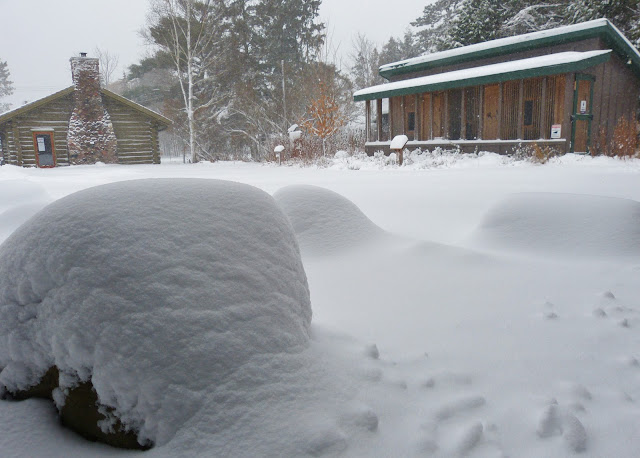Enduring and Enjoying a Wintry Landscape
On mornings like these, I feel a false sense of kinship with those who live in Arctic regions. I prepare myself for the journey into town by piling on my winter coat, scarf, mittens, and boots which so readily accompany me outside these days. As I step out from the warmth and comfort of my sleepy home, I peer out the garage door opening to see a handful of balsam firs sway knowingly in the audible wind. Below the trees, two men stand chatting away while snow spills over like piles of dry sand into the partially plowed driveway. The road just beyond them is barely visible and yet to be plowed at all. But nobody shows signs of concern over the conditions around us - not even the firs.
Life in northern Wisconsin is not really the same as that in the Arctic - the view of trees outside my house alone tells me that. It's a unique experience to live in - endure - the conditions this place has to offer. Our brief summer heat still allows us to plummet into Lake Namakagon's teeming waters, and by the time late-blooming asters and goldenrods reach peak beauty, I have all but forgotten the struggles of winter. But as soon as that shift occurs, the snow, ice, and cold dictate all life here.
People here so proudly adapt and endure. I continue my morning inside the Museum, and as snow continues to caress the windowpanes behind my desk, I'm reminded that the plants and animals outside must adapt and endure as well.
I walked past a preserved snowy owl on my way back to the office earlier. When she was alive, she would have been perfectly suited for life in wintry landscapes like ours. Her plumage helped her to both camouflage against a white environment and, in its abundance, provided insulation against the cold Arctic air. At home in the tundra, she would have been able to wait patiently for small rodents and birds to eat.
It's no coincidence that the willow ptarmigan, a snowy owl's occasional prey in their northern range, also dons a thick coat of snow-white feathers. Ptarmigans need their winter colors to blend in as snowy owls search a white landscape for signs of life. Willow ptarmigans were a surprise part of the collection when I came to our Museum of regional natural history. Although this member of the grouse family wouldn't have actually roamed this far south, they do help us southerners to tell a comparable story of life in the snow.
Ptarmigans have their hardy foot feathers for warmth and added surface area as they navigate an Arctic landscape. Their relatives who do live a bit south - ruffed grouse - use a different set of snowshoes. As grouse don't experience such a prolonged need for winter gear, they've developed seasonal footwear. Each autumn, growths of skin called pectinations develop on the sides of their toes and fall off come spring. Despite calling different places home, owls, ptarmigans, and grouse are built to weather the winter storm.
Most wintry days I feel just as adept at surviving these harsh conditions as those birds in our collection. I've learned to travel safely through thick snow or sleek ice, and so far have never found myself in danger of starving when conditions feel unbearable. While I might not say the same if transplanted to the Arctic, I'm pretty proud to consider myself among those who are capable of enduring - and dare I say enjoying - Wisconsin winters.



